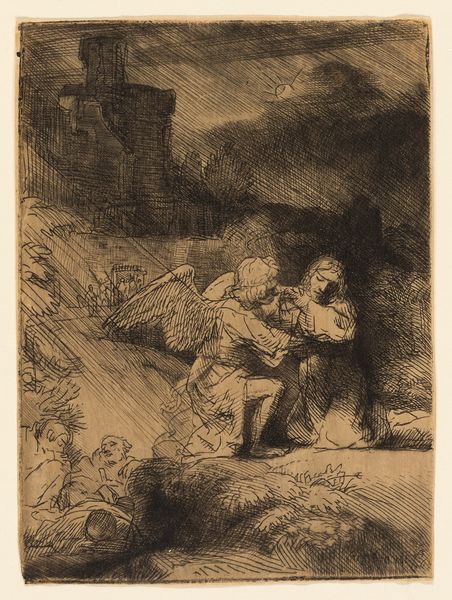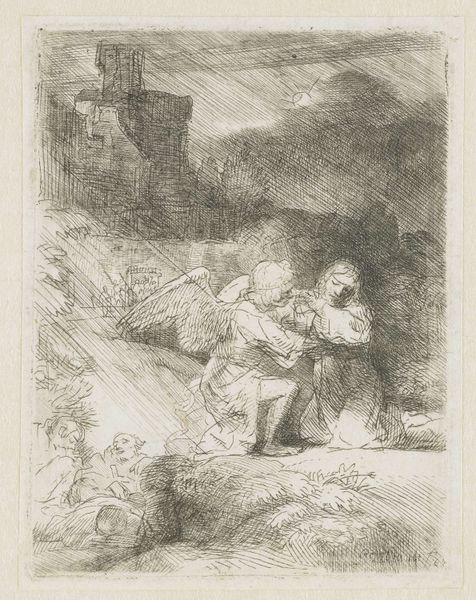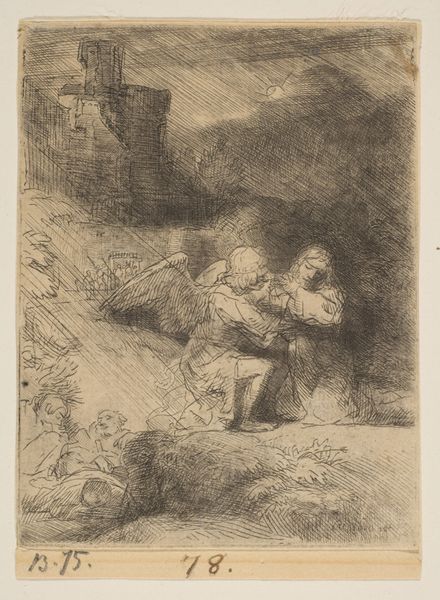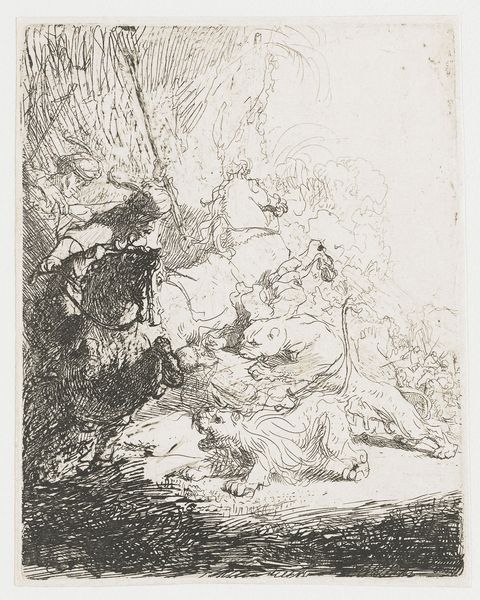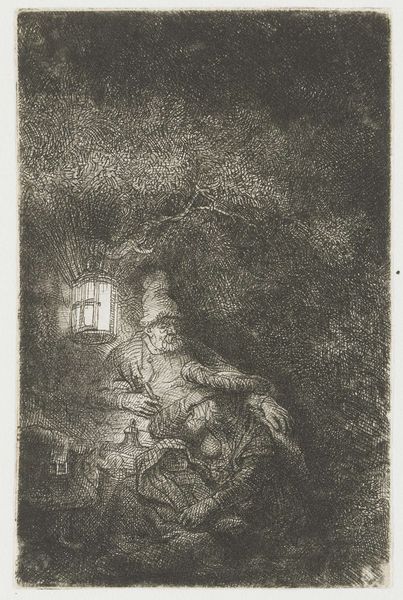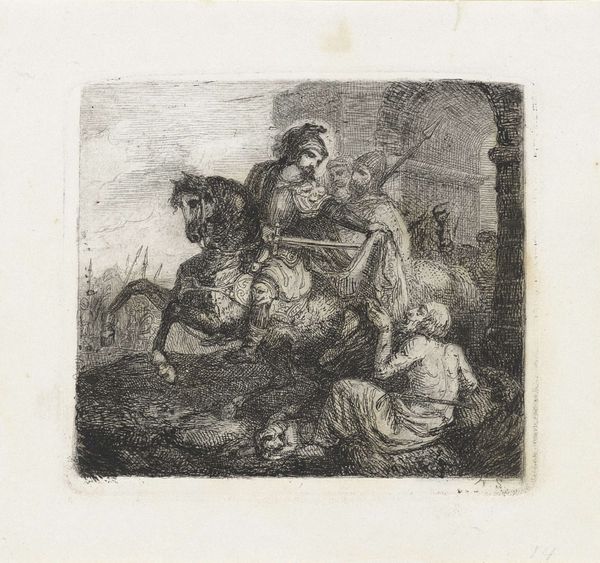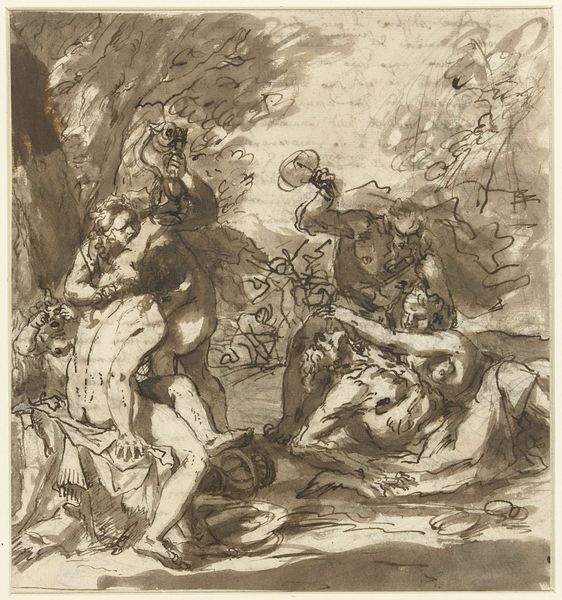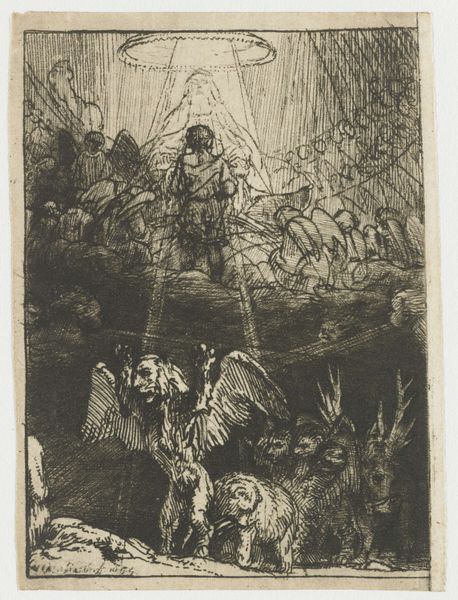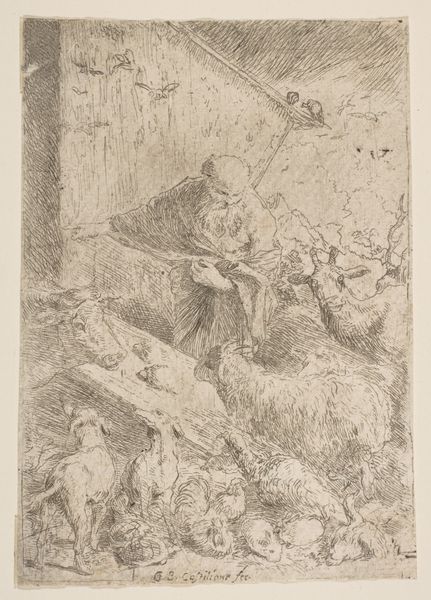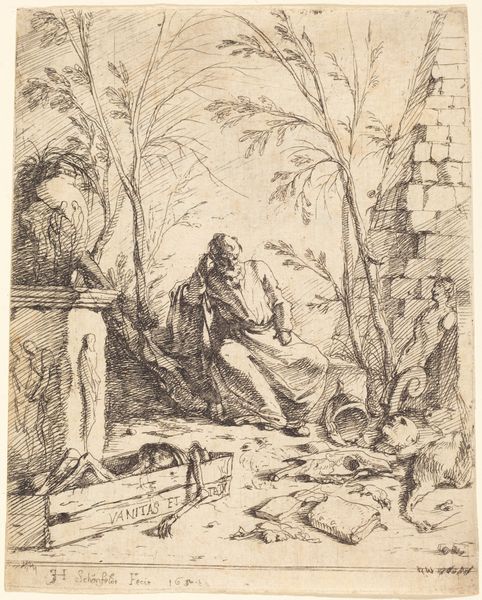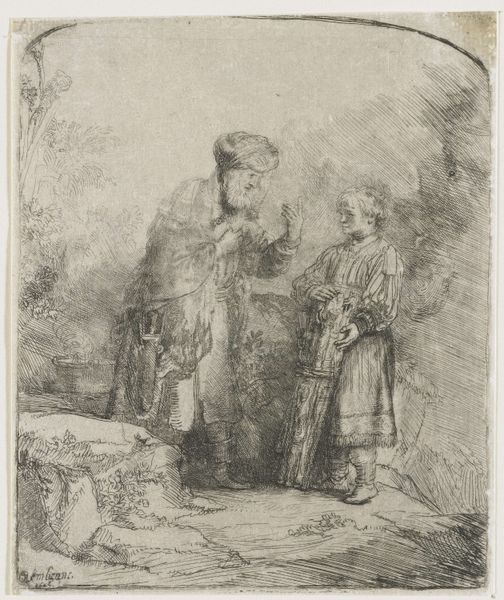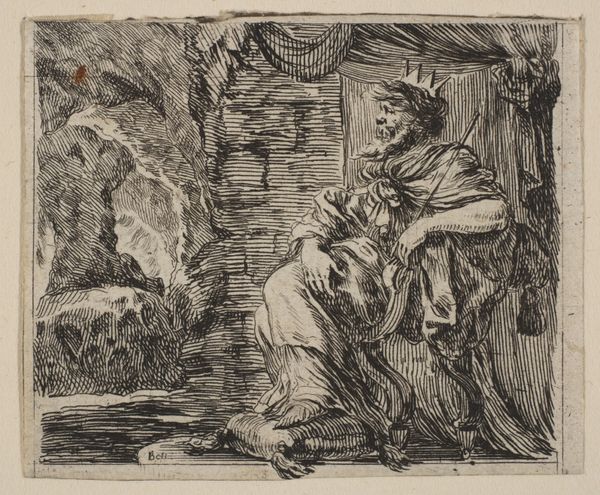
print, etching
#
narrative-art
#
baroque
# print
#
etching
#
landscape
#
charcoal drawing
#
figuration
#
chiaroscuro
Dimensions: height 111 mm, width 83 mm
Copyright: Rijks Museum: Open Domain
Editor: This is Rembrandt van Rijn's etching, "The Agony in the Garden," created around 1652. The dense shading and almost frantic lines create a very turbulent, emotional atmosphere. It depicts a really dramatic scene. What do you make of it? Curator: Well, viewing it through a historical lens, it’s striking how Rembrandt portrays this pivotal biblical scene. He avoids the idealized, grand depictions favored by the Catholic Baroque, instead choosing a deeply personal, almost intimate perspective. Look at the intense chiaroscuro. How does it guide your eye and shape the emotional weight of the narrative? Editor: It makes the figures seem very vulnerable, hidden almost. The light is so selective, spotlighting Christ and the angel, which creates this really intimate, almost claustrophobic feeling, even within the landscape. Curator: Exactly. And that's key to understanding its impact. Rembrandt was working in a Dutch Republic defined by its Protestant values and emerging print culture. Religious imagery was being democratized. This wasn't an altarpiece; it was an etching, accessible to a wider audience, and focusing on individual piety and emotional experience. What effect do you think this distribution has on its reception? Editor: So it brings religious art out of the church and into people's homes? Making it more accessible and encouraging individual interpretations. Curator: Precisely! Rembrandt capitalizes on this shift, emphasizing personal and emotional connections to faith. It’s no longer about the grandeur of the Church, but a man's personal struggle with his destiny. Editor: It's amazing how an etching can have such a monumental emotional impact. I never considered how the means of production and distribution could so fundamentally shift the interpretation of religious art. Curator: It certainly underscores the social and political power embedded within visual representation. It's not just the image, but how and where it circulates.
Comments
No comments
Be the first to comment and join the conversation on the ultimate creative platform.
